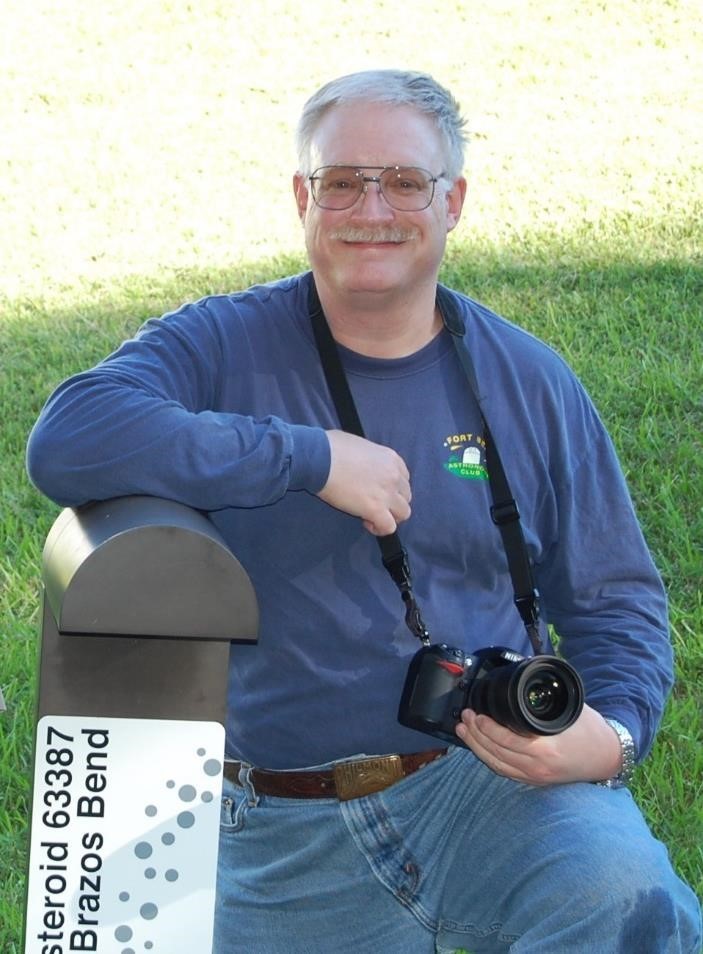The George Observatory could not have survived without our many stellar astronomers over the years. We will be highlighting some of the amateur astronomers who continue to generously share their time and talents so visitors can see images from a variety of telescopes to enjoy the night sky.

How and when did you get interested in astronomy?
Joe: My earliest space-related memory was the famous Christmas Eve message from Apollo 8.
Then in March 1970 I watched a total solar eclipse from our backyard in Tulsa, Oklahoma. Weeks later we had Bennett’s comet, which was big and bright with a long tail, just like every kid thought a comet should look. Light pollution was much less in those days – we could easily see the Milky Way from suburban Tulsa, and the comet was spectacular right from our front yard. A month later was Apollo 13. I have been interested in space and astronomy ever since.
What is your background? How did you start volunteering at The George?
Joe: I earned degrees in Math and Geophysics. I did a post-doc at the University of Hawaii, and I got to meet quite a few people at the Institute for Astronomy while I was there. I worked in the oil industry in Tulsa and then Houston.
In March 1996, right when comet Hyakutake was closest, I was annoyed that I had to make a business trip to the light-polluted city of Houston! To make it up to me, coworkers took me to a public observing event at the George Observatory. The event was rained out so almost nobody came, but I ended up getting a detailed personal tour of the Research Dome. When I moved to Houston in July 1999 I started volunteering.
What is one of your most memorable moments at The George?
Joe: I’ve had quite a few memorable moments at the George. Some years ago, I thought I had discovered a pretty bright and fast-moving asteroid. The following night I was trying to image it again to confirm the discovery (necessary to get credit). There was a group of Girl Scouts that night. I showed them a few objects visually with the East Dome telescope. Then while they took a nature hike I switched over to imaging, and when they came back I showed them my asteroid “live” on the computer screen, which was bright enough to see in the raw data, and which moved fast enough that it noticeably moved from one downloaded image to the next. I got to tell them, “This confirms my observation from last night and now I can claim that asteroid as my discovery!”
Why should visitors come out to The George Observatory?
Joe: It seems that most people think science is done by people in some secret society who may be “hiding the truth”; that the universe is not accessible to everyday people. I say: Come out and see a bit of the wider universe with your own senses – we may be able to show you something that until now you’ve only read about.
The newly renovated George Observatory is now open to the public for nightly stargazing. Click here for upcoming dates.





